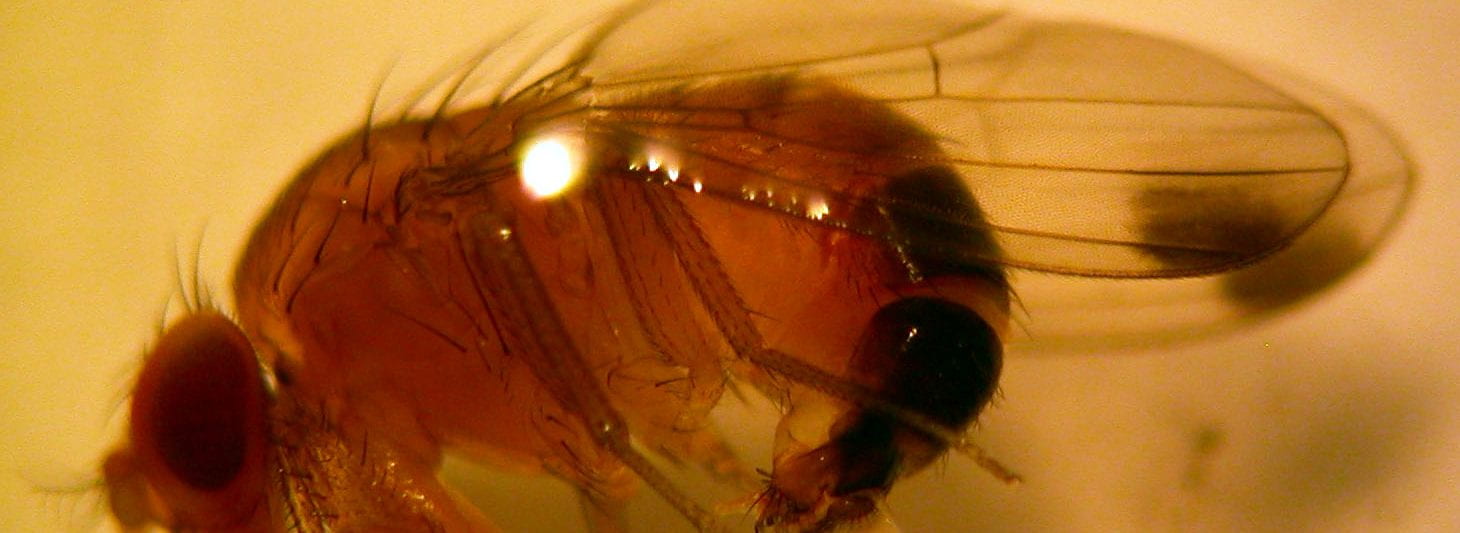A single female SWD was caught in a trap collected on August 25, 2014 by Paul Hetzler, St. Lawrence County Cornell Cooperative Extension. The trap was set in a berry field. (GDD = 1749, day length 13:31)
To date, most trapping sites in NY have caught SWD, reached sustained trap captures, and populations are climbing. Exceptions to this are three sites in Herkimer County, one site in Saratoga County, and one site in Clinton County, where SWD has not been caught. The tricky aspect of monitoring is that we think that once there is ample ripe fruit in the field and on the ground, the traps may not be as attractive to SWD, though research hasn't verified this.
Traps in the sites I am monitoring in Central NY, the Finger Lakes, and eastern Lake Ontario regions are being pulled this week. The combined total number of SWD caught in the four traps per site at those locations is still low (less than 20) in most sites. However, we are seeing evidence of oviposition and infestation of fruit. SWD populations will continue to increase into the fall and early winter months placing late-season fruit crops at high risk of infestation.
If you are growing blackberries, fall raspberries, elderberries, day neutral strawberries, or late-season blueberries, an insecticide program should be initiated to protect fruit from infestation. The good news is that many of NY's fruit crops escaped infestation this year because SWD arrived 2-4 weeks later than in 2013.


We, in Otsego County, have not evidenced the effect of the SWD to date. I think there were too many 46 degree nights during the first three weeks of August that effected egg implantation by the SWD...? 8 acres of mid-season blueberries just coming to a completed harvest, 8-27-14. David Ingalls, Ingalls Blueberry Hill 607-437-7910